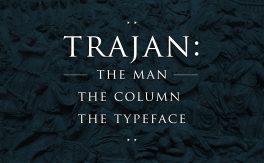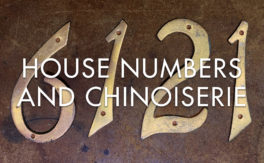The terms we use for different letterforms come from how they were stored.
In the beginning, there were capital letters (majuscule letters). The written languages of the Ancient Greeks and Romans were both in all caps. The Roman square capitals and the Roman calligraphic script eventually generated Uncial script. Uncial was used between the 4th and 8th centuries and continued the style of all caps. Around the late 8th century however, the Benedictine monks of Corbie Abbey in France began using a new style of writing which became the Carolingian script. Carolingian could be written faster than Uncial script because it used a new style of letters: lowercase (minuscule letters). What this meant was that some European countries now had two different styles for each letter of the alphabet. These different letterforms meant the same things, and were pronounced the same ways, but they looked different.
While these letterforms started off isolated to their respective styles of writing, over the centuries they began to commingle. This merger of letterforms was partially inspired by the decorative initial caps in illuminated manuscripts. It wasn’t until the 14th century that grammatical rules began to define when to use a majuscule letterform in otherwise minuscule text (such as capitalizing the start of a sentence, or someone’s name, etc).

Majuscule minuscule, uppercase lowercase
Johannes Gutenberg introduced the printing press to Europe in 1439. The printing press allowed individual metal letters to be assembled together to print information. All of these metal letters were organized into trays/drawers/cases. The majuscule letters were used less often and so were placed higher up. The minuscule letters were used the most and were placed the closest to the worker setting the type. Because of their position these higher elevated majuscule letters became known as “uppercase” while the easier to reach minuscule letters became “lowercase.”

Added bonus: Not all languages have uppercase and lowercase letters. Unicase languages include Arabic, Hebrew, and Georgian to name a few. That said, while Arabic doesn’t have the capitalization rules that Latin derived languages now have, Arabic does utilize the IMFI writing system. Based on the position of the letter in a word or sentence (initial, medial, final, or isolated), one of four different shapes are used. So instead of the two letter form variations that the Roman alphabet has Arabic has four but for different reasons.





